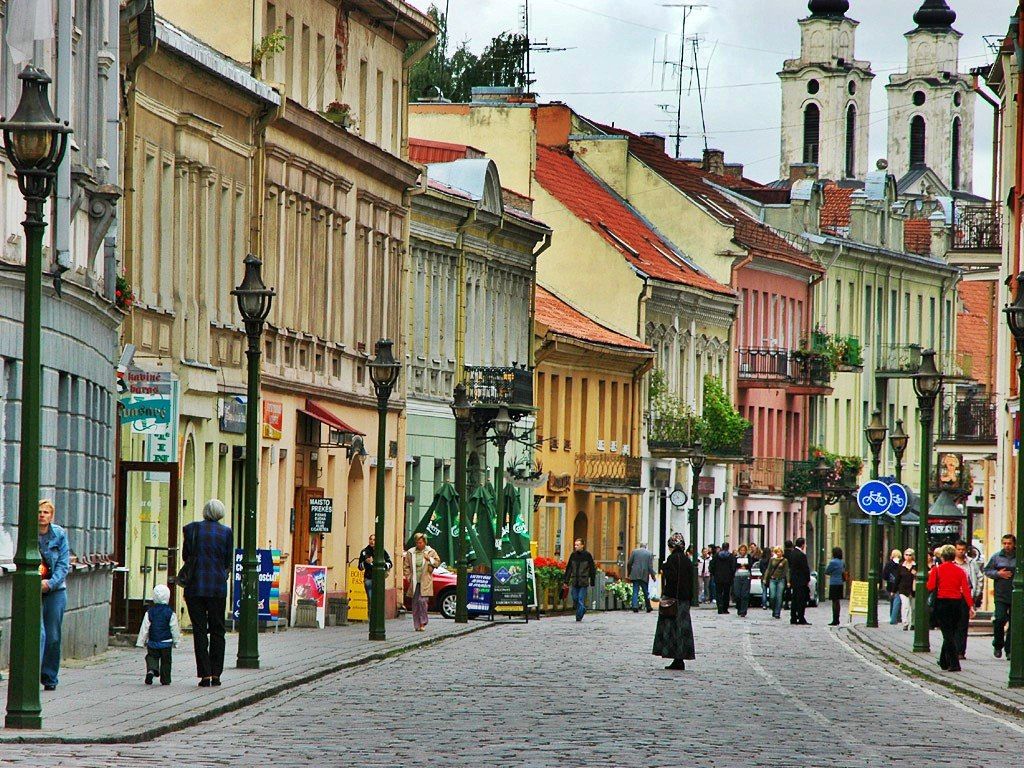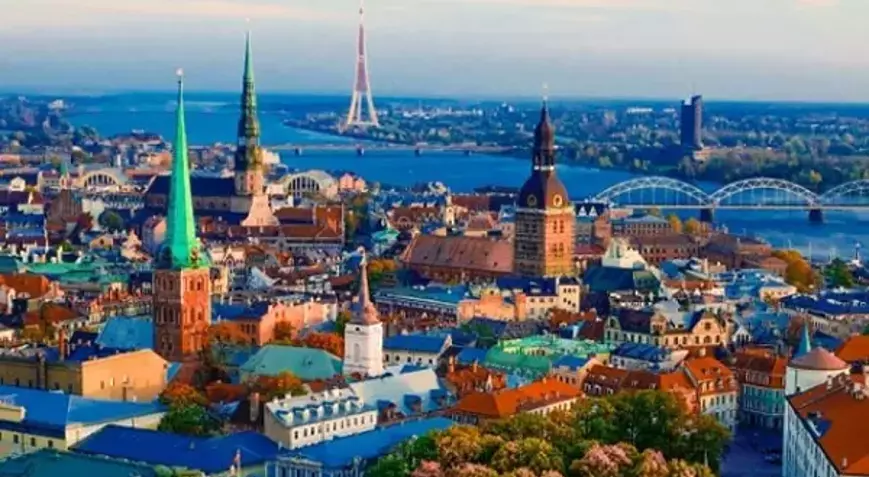Istanbul, the vibrant city located at the crossroads of Europe and Asia, has a rich and storied history that has shaped its culture and architecture. From ancient ruins to stunning mosques and palaces, this city offers visitors a journey through time and a glimpse into its diverse heritage. In this blog post, we will explore the must-visit historic sites, uncover the ancient ruins scattered throughout the city, and delve into the architectural marvels that showcase the Ottoman influence. Additionally, we will retrace the Byzantine heritage by exploring Istanbul’s churches and pay homage to its Islamic culture by visiting iconic mosques. Lastly, we will venture into the world of museums and palaces, which play a crucial role in preserving Istanbul’s cultural legacy. Get ready to immerse yourself in the captivating history of Istanbul.
The Rich History of Istanbul: A Brief Overview
Istanbul, the vibrant and bustling city that straddles both Europe and Asia, has a rich and captivating history that spans over two millennia. From its humble beginnings as a Greek fishing village to its status as the capital of the Roman, Byzantine, and Ottoman Empires, Istanbul has always been a melting pot of cultures, religions, and traditions.
The story of Istanbul begins in 660 BC, when it was founded as Byzantium by Greek settlers, who saw its strategic location as an ideal spot for a trading center. Over the centuries, the city grew in importance and prosperity, becoming the capital of the Roman Empire in 330 AD when Emperor Constantine the Great founded Constantinople. Under Roman rule, Constantinople flourished as a center of commerce, art, and religion.
The fall of the Roman Empire in 476 AD marked a turning point in Istanbul’s history. The city was then renamed Constantinople and became the capital of the Byzantine Empire. The Byzantine era was characterized by the construction of magnificent churches and palaces, including the iconic Hagia Sophia, which still stands today as a testament to the city’s Byzantine heritage.
- The Greek fishing village of Byzantium is founded (660 BC)
- Constantinople becomes the capital of the Roman Empire (330 AD)
- Constantinople becomes the capital of the Byzantine Empire (476 AD)
The Byzantine Empire fell to the Ottoman Turks in 1453, and Constantinople was renamed Istanbul. Under Ottoman rule, the city reached its golden age, with the construction of grand mosques, palaces, and public buildings. The Ottoman influence is still evident in Istanbul’s architecture, with the famous Blue Mosque and Topkapi Palace being prime examples of the city’s Ottoman heritage.
Today, Istanbul is a city where ancient history meets modernity. Its streets are lined with centuries-old buildings, its air filled with the aroma of spices, and its mosques echoing with the call to prayer. From the magnificent Byzantine churches to the opulent Ottoman palaces, Istanbul’s architectural marvels are a testament to its rich history.
| Historical Period | Key Events |
|---|---|
| Roman Empire | Foundation of Constantinople (330 AD) |
| Byzantine Empire | Construction of Hagia Sophia (537 AD) |
| Ottoman Empire | Fall of Constantinople, renaming it to Istanbul (1453 AD) |
In conclusion, Istanbul’s rich history is a tapestry woven with the threads of different civilizations. From its Greek and Roman origins to its Byzantine and Ottoman legacies, the city is a treasure trove of historical wonders waiting to be explored. Whether you’re fascinated by ancient ruins, awe-inspiring mosques, or grand palaces, Istanbul offers a glimpse into the past that will leave you enchanted.
Must-Visit Historic Sites in Istanbul: Top Picks
Istanbul, a city overflowing with history and culture, is home to countless historic sites that are a testament to its rich past. For those eager to delve into the city’s fascinating heritage, there are several must-visit historic sites that should not be missed. Whether you are an architecture enthusiast, a history buff, or simply curious about the region’s ancient roots, Istanbul offers a diverse array of attractions to explore. In this blog post, we will take a closer look at some of the top picks for historic sites in Istanbul, providing you with a glimpse into the city’s captivating past.
One of the most iconic and prominent historic sites in Istanbul is the Hagia Sophia. This architectural marvel, built in the 6th century, has withstood the test of time and is a true symbol of the city’s history. Originally serving as an Eastern Orthodox cathedral, it later became a mosque before finally being transformed into a museum. Its impressive dome and stunning mosaics make it a remarkable sight to behold. A visit to the Hagia Sophia is a must for anyone interested in experiencing the grandeur of Istanbul’s past.
Another must-visit site in Istanbul is the Topkapi Palace. This opulent palace was the primary residence of the Ottoman sultans for over four centuries. As you explore its magnificent halls and lush gardens, you will be transported back to the era of the Ottoman Empire. The palace showcases a vast collection of artifacts, including exquisite jewelry, ancient manuscripts, and elaborate imperial garments. A visit to the Topkapi Palace is like stepping into a living museum, offering a glimpse into the lavish lifestyle of the Ottoman rulers.
| Site | Description |
|---|---|
| Hagia Sophia | An architectural marvel with a rich history, originally an Eastern Orthodox cathedral, later converted into a mosque and now a museum. |
| Topkapi Palace | The primary residence of the Ottoman sultans, showcasing their opulent lifestyle and a diverse collection of artifacts. |
If you are interested in ancient ruins, a visit to the Basilica Cistern is a must. This underground marvel is the largest surviving Byzantine cistern in Istanbul. As you descend into its mysterious depths, you will witness the grandeur of its vast chambers and the mesmerizing sight of its striking columns. This hidden gem is a true testament to the city’s Byzantine heritage and offers a unique perspective on Istanbul’s past.
These are just a few of the must-visit historic sites in Istanbul. From grand palaces to ancient ruins, the city offers a plethora of attractions that will captivate and inspire history enthusiasts and curious travelers alike. Exploring Istanbul’s historic sites is an opportunity to delve into the rich tapestry of its past and gain a deeper appreciation for the cultural heritage that shapes the city today.
Uncovering Ancient Ruins: A Journey through Istanbul
Istanbul, known for its mesmerizing blend of cultures and historical significance, is a treasure trove of ancient ruins waiting to be discovered. As you embark on a journey through this captivating city, you will find yourself transported back in time, exploring the remnants of civilizations that once thrived in this majestic region. From Roman and Byzantine ruins to relics from the Ottoman Empire, Istanbul’s ancient sites offer a fascinating glimpse into its rich history.
The first stop on your journey through Istanbul’s ancient ruins is the magnificent Hippodrome. Once a bustling center for chariot races and other public events, this ancient site dates back to the Roman era. As you wander through the remaining monuments and obelisks, such as the Obelisk of Theodosius and Serpent Column, you can almost hear the echoes of the past.
Continuing your exploration, the next must-visit destination is the awe-inspiring Hagia Sophia. Originally built as a Byzantine church in the 6th century, this architectural marvel later transformed into an imperial mosque and now serves as a museum. Step inside this monumental structure, and you will be greeted by stunning mosaics, intricate carvings, and an overwhelming sense of grandeur.
- Historical significance
- Blend of cultures
- Ancient sites
Next on your itinerary is the fascinating underground Basilica Cistern, also known as the Sunken Palace. This underground marvel, built during the Byzantine era, provided a water filtration system for the city. As you descend into the dimly lit cistern, you will be captivated by the sight of towering columns, illuminated by soft lights. Take a moment to appreciate the mesmerizing reflection of the columns in the water, adding to the mystical ambiance.
No journey through Istanbul’s ancient ruins would be complete without a visit to the majestic Topkapi Palace. This opulent residence of the Ottoman sultans offers a glimpse into the lives of the imperial court. Explore the sprawling complex, marvel at the exquisite architecture, and immerse yourself in the opulence of a bygone era. Don’t miss the chance to see the legendary Topkapi Dagger and other priceless treasures housed within the palace.
| Ancient Ruins | Historical Significance | Cultural Heritage |
|---|---|---|
| Hippodrome | Roman Era | Blend of Roman and Byzantine influences |
| Hagia Sophia | Byzantine Era | Iconic symbol of Byzantine architecture |
| Basilica Cistern | Byzantine Era | Unique underground water filtration system |
| Topkapi Palace | Ottoman Era | Residence of Ottoman sultans |
As you uncover Istanbul’s ancient ruins, it becomes evident that this city holds a remarkable tale of centuries gone by. Each crumbling stone and magnificent structure tells a story, reminding us of the extraordinary civilizations that once thrived here. So, lace up your walking shoes, grab a map, and embark on a journey through Istanbul’s ancient ruins – a truly unforgettable experience that will leave you in awe.
Architectural Marvels: Ottoman Influence in Istanbul
Istanbul, the cultural and historical heart of Turkey, is home to a fascinating blend of architectural styles that reflect its rich heritage. One of the most prominent influences on Istanbul’s architecture is the Ottoman Empire, which ruled the city for centuries. The Ottoman architects left an indelible mark on Istanbul, creating magnificent structures that still stand today. Let’s take a closer look at some of the architectural marvels influenced by the Ottoman Empire in Istanbul.
1. Hagia Sophia:
The Hagia Sophia is a true masterpiece and a testament to the Ottoman architectural style. Originally built as a Byzantine church in the 6th century, it was later converted into a mosque during the Ottoman era. The structure boasts stunning domes, intricate mosaics, and towering minarets, showcasing the fusion of Byzantine and Ottoman architectural elements.
2. Topkapi Palace:
Another iconic Ottoman architectural marvel is the Topkapi Palace. It served as the primary residence and administrative center of the Ottoman sultans for over four centuries. The palace complex is a true reflection of Ottoman opulence, featuring courtyards, pavilions, and exquisite tilework. Visitors can explore its various sections, including the Harem, Imperial Treasury, and the sprawling gardens.
3. Süleymaniye Mosque:
The Süleymaniye Mosque, built by the legendary Ottoman architect Mimar Sinan, stands as a remarkable example of Ottoman architecture. With its majestic dome, grand courtyard, and intricate calligraphy, the mosque is a sight to behold. Its panoramic views of the city from the terrace make it a popular spot for locals and tourists alike.
4. Dolmabahçe Palace:
The Dolmabahçe Palace, located on the shores of the Bosphorus, is a stunning architectural gem that showcases the elegance and grandeur of the Ottoman Empire. This opulent palace served as the administrative center during the late Ottoman period, featuring an impressive blend of Baroque, Neoclassical, and Ottoman architectural styles. Visitors can marvel at its grand chandeliers, luxurious furnishings, and sprawling gardens.
In conclusion, Istanbul’s architectural marvels influenced by the Ottoman Empire are truly awe-inspiring. From the grandeur of the Hagia Sophia to the opulence of the Topkapi Palace and the Süleymaniye Mosque, these structures are a testament to the rich heritage and cultural legacy of Istanbul. Exploring these magnificent architectural wonders is a must for anyone visiting this vibrant and historically significant city.
Retracing Byzantine Heritage: Exploring Istanbul’s Churches
Istanbul, the vibrant city that straddles two continents, is not only known for its stunning architecture and rich cultural heritage but also for its deep historical roots. In this blog post, we will delve into the fascinating world of Byzantine heritage and take a closer look at the majestic churches that stand as a testament to Istanbul’s Byzantine past.
The Byzantine Empire, which spanned over a thousand years, played a significant role in shaping the history and culture of Istanbul. During this period, numerous magnificent churches were constructed, many of which have managed to survive the test of time and can still be explored today.
One such iconic church is the Hagia Sophia, a UNESCO World Heritage Site and a masterpiece of Byzantine architecture. Originally built as a Christian basilica in the 6th century, it later became a mosque and is now a museum. The Hagia Sophia’s awe-inspiring domed interior, adorned with intricate mosaics and precious relics, is a must-visit for anyone interested in Byzantine history.
Another noteworthy church is the Chora Church, also known as the Church of the Holy Saviour in Chora. Built in the 4th century, it underwent several renovations and expansions over the years. The Chora Church is renowned for its stunning frescoes and mosaics that depict scenes from the life of Jesus and the Virgin Mary. It is a true gem for art enthusiasts and offers a glimpse into the artistic brilliance of the Byzantine era.
| Church | Location | Notable Features |
|---|---|---|
| Hagia Sophia | Sultanahmet | Grand dome, intricate mosaics |
| Chora Church | Edirnekapı | Beautiful frescoes, vibrant mosaics |
| Church of St. Savior in Chora | Fatih | Stunning biblical scenes depicted in mosaics |
Aside from these two famous churches, there are many other hidden gems awaiting discovery in Istanbul. The Church of St. Sergius and Bacchus, also known as “Little Hagia Sophia,” is a smaller-scale replica of its famous counterpart. With its intricate brickwork and unique architectural style, it offers a glimpse into Byzantine design principles.
The Pantokrator Church, situated in the historic neighborhood of Ayvansaray, is another must-see for history enthusiasts. Although it has suffered considerable damage over the years, it still boasts beautiful frescoes and breathtaking views of the Golden Horn.
Exploring Istanbul’s churches is like embarking on a journey through time. Each stone, each mosaic, and each fresco tells a story of a bygone era. So, next time you find yourself in Istanbul, make sure to take some time to retrace the Byzantine heritage and discover the architectural wonders that await in its churches.
Paying Homage to Islamic Culture: Iconic Mosques in Istanbul
Istanbul, the vibrant and culturally rich city that straddles two continents, is home to numerous iconic mosques that pay homage to its Islamic heritage. These architectural marvels not only serve as places of worship but also stand as testaments to the city’s glorious past. Istanbul’s mosques have a unique blend of Islamic, Byzantine, and Ottoman influences, making them not only religious sites but also significant historical and cultural landmarks. Whether you are a history enthusiast or simply seeking spiritual solace, exploring these iconic mosques is an essential part of your visit to Istanbul.
One of the most famous mosques in Istanbul is the awe-inspiring Hagia Sophia, which was originally built as a Byzantine church in the 6th century. With its majestic dome and intricate architectural details, Hagia Sophia reflects both Byzantine Christian and Ottoman Islamic influences. Converted into a mosque during the Ottoman era and now functioning as a museum, Hagia Sophia mesmerizes visitors with its grandeur and historical significance.
Another remarkable mosque that cannot be missed is the Blue Mosque, officially known as the Sultan Ahmed Mosque. Built in the early 17th century, the Blue Mosque impresses with its six towering minarets and a stunning interior adorned with blue Iznik tiles. This masterpiece of Ottoman architecture not only provides a place for prayer but also offers a serene atmosphere for contemplation and reflection.
One of the oldest and most significant religious complexes in Istanbul is the Süleymaniye Mosque. Designed by the renowned Ottoman architect Mimar Sinan and completed in 1557, the Süleymaniye Mosque is a testament to the imperial grandeur of the Ottoman Empire. Its impressive dome and four slender minarets dominate the city’s skyline. The mosque also houses the tombs of Sultan Suleiman the Magnificent and his wife, making it a pilgrimage site for many.
- Hagia Sophia: A majestic mosque with Byzantine and Ottoman influences.
- Blue Mosque (Sultan Ahmed Mosque): A masterpiece of Ottoman architecture known for its blue Iznik tiles.
- Süleymaniye Mosque: An imperial mosque designed by Mimar Sinan, showcasing Ottoman grandeur.
| Mosque | Architecture | Significance |
|---|---|---|
| Hagia Sophia | Byzantine and Ottoman | Historical and cultural landmark, now functioning as a museum |
| Blue Mosque | Ottoman | Impressive minarets and intricate interior with blue Iznik tiles |
| Süleymaniye Mosque | Ottoman | Designed by Mimar Sinan, houses the tombs of Sultan Suleiman and his wife |
These three iconic mosques are just a glimpse of the rich Islamic heritage that Istanbul has to offer. Each mosque has its unique charm, architectural features, and historical significance. Exploring these magnificent structures not only allows you to pay homage to Islamic culture but also provides invaluable insights into the city’s fascinating past. Whether you are an art lover, a history buff, or a spiritual seeker, a visit to Istanbul’s iconic mosques will undoubtedly leave you in awe of the city’s cultural legacy.
Museums and Palaces: Preserving Istanbul’s Cultural Legacy
Istanbul, the vibrant and historical city that straddles Europe and Asia, has a rich cultural heritage that is preserved and showcased in its numerous museums and palaces. These institutions not only serve as reminders of the city’s glorious past but also offer a glimpse into its diverse cultural legacy. Whether you are a history enthusiast, an art lover, or simply someone curious about the region’s past, Istanbul’s museums and palaces are a must-visit during your journey through this enchanting city.
One of the most iconic museums in Istanbul is the Istanbul Archaeology Museums, located in the Sultanahmet neighborhood. This museum complex houses an impressive collection of artifacts from various civilizations that have left their mark on the region over centuries. From ancient Egyptian hieroglyphics to Greek and Roman sculptures, the museum offers a comprehensive insight into Istanbul’s multicultural history. The main building, known as the Archaeological Museum, showcases objects from ancient Anatolia, while the Museum of the Ancient Orient focuses on artifacts from Mesopotamia and the Arabian Peninsula. Lastly, the Tiled Pavilion exhibits a remarkable collection of Ottoman tiles and ceramics.
Another gem of Istanbul’s cultural legacy is the Topkapi Palace, a magnificent palace complex that served as the residence of the Ottoman sultans for nearly four centuries. Situated on a hill overlooking the Bosphorus Strait, the palace exhibits an exquisite collection of historical artifacts, including royal garments, precious jewels, and religious relics. Visitors can explore various sections of the palace, such as the Harem, the Council Chamber, and the Imperial Treasury, each offering a glimpse into the opulent lifestyle of the Ottoman rulers. The lush gardens surrounding the palace provide a tranquil escape from the bustling city.
In addition to the Istanbul Archaeology Museums and Topkapi Palace, there are several other museums and palaces worth exploring in Istanbul. The Hagia Sophia Museum, formerly a Byzantine church and later converted into an imperial mosque, now showcases a mesmerizing blend of Christian and Islamic art and architecture. The Chora Museum, located in the Edirnekapı neighborhood, is renowned for its splendid Byzantine mosaics and frescoes. The Dolmabahçe Palace, on the other hand, offers a glimpse into the opulent lifestyle of the late Ottoman era with its lavish interiors and vast collection of European and Ottoman furnishings.
| Must-Visit Museums and Palaces in Istanbul: |
|---|
| – Istanbul Archaeology Museums |
| – Topkapi Palace |
| – Hagia Sophia Museum |
| – Chora Museum |
| – Dolmabahçe Palace |
These are just a few examples of the museums and palaces that contribute to Istanbul’s cultural legacy. Each institution offers a unique experience and a chance to delve deeper into the city’s history and artistic heritage. Whether you are interested in archaeological treasures, Ottoman grandeur, or religious art, Istanbul’s museums and palaces have something to offer to every visitor.
Preserving Istanbul’s rich cultural legacy is not only a matter of showcasing historical artifacts and architectural wonders but also a way to ensure that future generations can appreciate and learn from the city’s remarkable heritage. These museums and palaces play a crucial role in fostering cultural understanding and promoting dialogue about Istanbul’s diverse past. So, when you visit Istanbul, make sure to set aside time to explore these remarkable institutions and immerse yourself in the city’s cultural tapestry.
Frequently Asked Questions
1. Why does Istanbul have such a rich history?
Istanbul has a rich history due to its strategic location between Europe and Asia, which has attracted numerous civilizations and empires throughout the ages. Its position as a cultural crossroads has influenced its diverse historical background.
2. What are some must-visit historic sites in Istanbul?
Some must-visit historic sites in Istanbul include the Hagia Sophia, Topkapi Palace, Blue Mosque, Grand Bazaar, and the Basilica Cistern. These iconic landmarks showcase the city’s historical significance and architectural marvels.
3. What ancient ruins can be found in Istanbul?
Istanbul is home to a plethora of ancient ruins, such as the Hippodrome of Constantinople, the Walls of Constantinople, and the Column of Constantine. Exploring these ruins offers a fascinating journey into the city’s past.
4. How has Ottoman influence shaped the architecture of Istanbul?
Ottoman influence has greatly shaped the architecture of Istanbul, with notable examples being the magnificent Suleymaniye Mosque, the Dolmabahce Palace, and the Topkapi Palace. These architectural marvels reflect the opulence and grandeur of the Ottoman Empire.
5. What churches in Istanbul highlight its Byzantine heritage?
Istanbul is renowned for its Byzantine heritage, and several churches exemplify this rich history. Some notable churches to explore include the Hagia Sophia, Chora Church, and the Church of St. Savior in Chora. These architectural treasures showcase the splendor of Byzantine art and craftsmanship.
6. Which mosques in Istanbul are iconic and worth visiting?
Istanbul is renowned for its iconic mosques, and some of the must-visit ones include the Blue Mosque, Süleymaniye Mosque, and the Rustem Pasha Mosque. These architectural masterpieces not only serve as places of worship but also stand as symbols of Islamic culture and heritage.
7. What museums and palaces in Istanbul preserve its cultural legacy?
Istanbul boasts numerous museums and palaces that preserve its cultural legacy. Notable ones include the Istanbul Archaeology Museums, the Topkapi Palace Museum, and the Dolmabahce Palace Museum. These institutions allow visitors to delve into the city’s rich history and explore its artistic treasures.
EDITOR
Categories
Recent Articles

Real Estate Sales Hit a Peak in September: Is Now the Best Time to Invest in Turkish Property?
October 17, 2024

IMF Forecasts Turkey’s Inflation Decline: What It Means for Real Estate Investors
October 12, 2024

September 2024: Foreign Interest in Turkish Real Estate Reaches New Heights
October 10, 2024

Why Golden Visa?
October 8, 2024

Golden Visa Showdown: Greece, Lithuania, Spain & Portugal – Which Program is Right for You?
October 4, 2024

A Complete Guide to the Lithuania Golden Visa Program Process
October 2, 2024

2024 Green Card Applications: Don’t Miss Your Chance to Achieve the American Dream!
October 2, 2024

The Lithuania Golden Visa: A Pathway to European Residency and Investment
September 26, 2024

Millionaire Migration Surges in 2024: Wealthy Individuals Flock to the UAE, U.S., and Singapore
September 15, 2024

A Comparative Look at European Golden Visa Programs: Why Lithuania Stands Out
September 13, 2024


